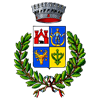What is a Ru?
A "Ru" is an irrigation channel dating back to between the 13th and 15th centuries. Created to transport water from streams and glaciers to the drier areas of the Aosta Valley, these channels have played a crucial role in the agricultural and economic development of the region. They have not only enabled the cultivation of vines and meadows, but also powered mills, facilitated livestock farming, and provided flood protection.
Today, many Rus are still operational and offer enchanting routes for walking, cycling, or horseback riding.
Itinerary Along the Ru du Prevot
If you find yourself in the Aosta Valley, you can't miss the itinerary along the Ru du Prevot, which will take you through a wonderful blend of history, nature, and local culture.
Start your journey at the Quart Castle, which offers a breathtaking view of Aosta and the lower Gran San Bernardo valley. Follow the path that leads you to discover three historic Rus: the Ru Champapon, the Ru Prévot, and the Ru Pompillard, crossing a variety of fascinating landscapes.
Meet the Grand Arvou aqueduct bridge, an architectural wonder from the medieval era, before immersing yourself in the green meadows and downy oak woods that accompany the trail.
As you continue on the route, you will be captivated by the open view of the Aosta plain, where you can admire iconic peaks such as the Grand Combin and the Grivola. Don't forget to stop for a refreshing break at one of the village's fountains before continuing your journey.
Descend towards the Ristorante Pizzeria La Meule, a perfect spot to rest and refresh before resuming your walk through flowering meadows and lush woods that line the Ru Champapon.
Conclude your hike by returning to Quart Castle, crossing the impressive Grand Arvou aqueduct bridge once again. And before heading home, we recommend visiting the Tzatelet Nature Reserve for a dip in pristine nature.
Useful Information
- Duration: Suitable for a full day
- Difficulty: Easy-Medium; suitable for walking or mountain biking with some precautions.
- Signage: Blue and yellow, with detailed indications along the route.
- Tips: Bring a camera to capture the breathtaking views and dress comfortably for a day of exploration.
- Recommended season: Spring, when the region is in full bloom and preparing for haymaking. Visit this region rich in history and natural beauty for an unforgettable experience and a deep connection with the cultural heritage of the Aosta Valley.
Address
- Riserva naturale Tzatelet
- Aosta
- Find on the map.






